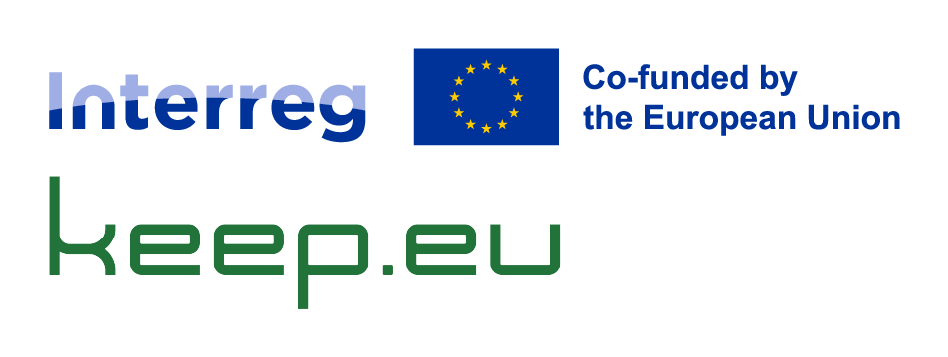Description
Description (DE): Die HU-AT Grenzregion mit ihrem gemeinsamen Wirtschafts-, Arbeits- sowie Kulturraum verfügt über ein gemeinsam gewachsenes kulturelles Erbe, welches in traditionellen, historisch verankerten Handwerkstechniken eine ihrer deutlichsten Ausführungen findet. Wie in etlichen anderen Grenzregionen haben viele dieser Handwerkstechniken mangels offen zugänglicher und einheitlich qualifizierter Ausbildungen den Sprung in die Moderne nicht geschafft. Oft wurden sie aufgrund ihrer "nicht nur" nationalen Bedeutung oder aufgrund genereller negativer öffentlicher Wahrnehmung bei Bewahrungsmaßnahmen vernachlässigt und laufen nun akut Gefahr, in Vergessenheit zu geraten. Dadurch droht der Verfall immateriellen kulturellen Erbes, kultureller Infrastruktur (wie z.B. Burgen und Klöster) sowie anderen Kulturgutes, für dessen Erhalt diese Handwerkstechniken essentiell sind. Die Problemstellung betrifft die gesamte Region - daher müssen durch grenzüberschreitende, innovative Maßnahmen gemeinsame Lösungen gefunden werden, von der der gesamte Programmraum profitiert. Das Projekt setzt sich zum Ziel, alte Handwerkstechniken durch grenzüberschreitende, neue institutionelle Vernetzungen, umfangreiche wissenschaftliche Aufbereitung und öffentlichkeitswirksame Kommunikationsmaßnahmen sowie innovative Ausbildungen dauerhaft zu revitalisieren. Dazu werden nach einer Analyse der Ist-Situation und Aufbereitung aller verfügbarer Daten Curricula, Prüfungen und Implementierungsmaßnahmen entwickelt und praktisch angewendet. Mittels moderner Analyse-, Weiterbildungs- und Qualifizierungsmethoden und der Zusammenarbeit relevanter Institutionen wird eine wiederbelebende arbeitswirtschaftliche Struktur geschaffen, deren Ziel die nachhaltige Bewahrung, Weitergabe sowie praktische und wirtschaftliche Anwendung dieser selten gewordenen Handwerkstechniken ist. Die gemeinsam mit Projekt EUREVITA SIAT 285 geplante Handwerksakademie gewährleistet Nachhaltigkeit, auch über die Programmregion/Projektlaufzeit hinaus.
Read more Description (HU): Az osztrák-magyar határrégiót közösen fejlődő gazdasági, munka- és kultúrtérségnek tekinthetjük. A régió közös kulturális örökségének egyik fontos megnyilvánulása a hagyományos, történelmi gyökerekkel bíró mesterségek megléte. Mint sok más határ menti régióban, itt is hiányzik a kézműves technikák fenntartásához szükséges, egységes, szabadon hozzáférhető, modern képzési struktúra. Ezen hagyományos szakmák negatív megítélése, valamint a megőrzésükre tett intézkedések hiányosságai miatt, ezen mesterségek hamarosan feledésbe merülnek. Eltünésükkel az örökségül hagyott kulturális infrastruktúra (pl. várak, kolostorok) és más, immateriális kultúrjavak megőrzése is nehézségekbe fog ütközni. A probléma a régió teljes egészét érinti, így a megoldáskereséshez is olyan határon átnyúló, innovatív intézkedésekre van szükség, melyek a teljes programterület javát szolgálják. A projekt célja, a hagyományos mesterségek újjáélesztése határon átnyúló újszerű intézményi együttműködések, innovatív képzések és a nyilvánosságot vonzó kommunikációs intézkedések segítségével. Ennek érdekében, a jelenlegi helyzet elemzése és az összes rendelkezésre álló adat előkészítése után, új tantervek, vizsgarendszerek, tanúsítási folyamatok kifejlesztését és gyakorlati alkalmazását tervezzük. A korszerű elemzési-, képzési-, és tanácsadási módszertan, valamint az újfajta intézményi együttműködés révén egy élénkítő munkagazdasági struktúra jön létre, amelynek célja ezen ritka kézműves technikák fenntartható megőrzése, átadása, valamint gyakorlati és gazdasági alkalmazása. Az EUREVITA SIAT 285 projekttel együtt létrehozott kézműves akadémia biztosítja a fenntarthatóságot, még a program régión és a projekt időtartamán túl is.
Read more Description (EN): The HU-AT border region, with its common economic, working and cultural space, has a commonly grown cultural heritage that finds one of its clearest manifestations in traditional, historically anchored crafting techniques. As in many other border regions, many of these craft techniques have not made the leap into modernity due to a lack of openly accessible and uniformly qualified training. They have often been neglected in conservation measures due to their "not only" national importance or due to general negative public perception and are now in acute danger of being forgotten. This threatens the decline of intangible cultural heritage, cultural infrastructure (such as castles and monasteries) and other cultural assets for which these crafting techniques are essential. The problem affects the entire region – therefore common solutions must be found through cross-border, innovative measures, from which the entire program area benefits. The project aims to permanently revitalize old crafting techniques through cross-border, novel institutional networks, extensive scientific processes and effective communication measures as well as innovative trainings. For this purpose, after an analysis of the current situation and preparation of all available data, curricula, tests and implementation measures will be developed and applied in practice. By means of modern analysis, further education and qualification methods and the cooperation of relevant institutions, a revitalizing work-economic structure is created, whose goal is the sustainable preservation, transfer and practical and economic application of these rare crafting techniques. The craft academy planned together with the EUREVITA SIAT 285 project ensures sustainability, even beyond the program region and the project duration.
Read more
Website: http://www.interreg-athu.eu/en/
Expected Results (DE): Institutionen beteiligt an grenzüberschreitenden Bildungsmaßnahmen
Expected Results (HU): A határon átnyúló képzési kezdeményezésekben résztvevő intézmények száma
Expected Outputs (DE): Revitalisierung alter Handwerkstechniken, Wissensaufbereitung, Ausbildungen, Handwerkskademie.
Die gemeinsame Arbeit an den Aktivitäten zur Erzielung der Ergebnisse vereint PP und strategische Partner aus dem Programmgebiet.
Expected Outputs (HU): A régi kézműves technikák újjáélesztése, tudásfeldolgozás, képzések, kézműves akadémia. A projekt eredményeinek megvalósítása érdekében végzett közös munka összekovácsolja a programterület stratégiai partnereit és a projektpartnereket egyaránt.
Thematic information
Specific Objective:
Strengthening intercultural capacities and labour mobility of the border population by supporting cross-border education initiatives and vocational training
Thematic Objective:
(11) enhancing institutional capacity of public authorities and stakeholders and efficient public administration through actions to strengthen the institutional capacity and the efficiency of public administrations and public services related to the implementation of the ERDF, and in support of actions under the ESF to strengthen the institutional capacity and the efficiency of public administration.
Read more
Investment Priority:
(11 ETC) ETC specific, for cross-border cooperation: enhancing institutional capacity of public authorities and stakeholders and efficient public administration by promoting legal and administrative cooperation and cooperation between citizens and institutions


